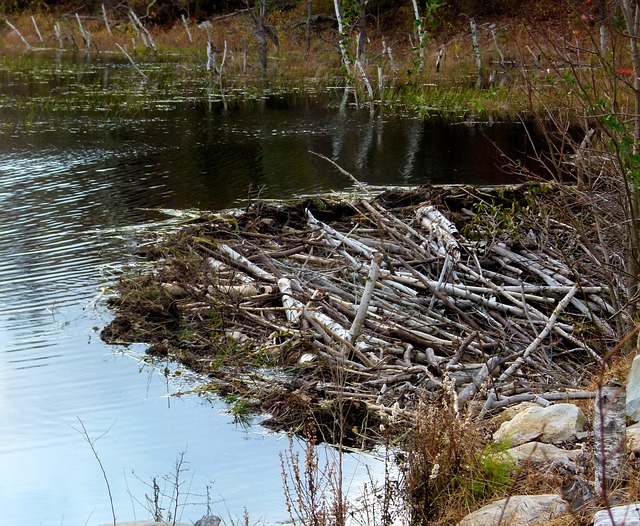Beavers are known for their impressive dam-building abilities, which help create essential habitats for themselves and other wildlife. However, many people may wonder just how long it takes for these industrious rodents to construct their dams.
The answer, as with many things in nature, can vary depending on several factors.
In general, beavers can construct a dam in as little as a few days, or it may take them several months to complete the project.
The length of time it takes for them to build a dam depends on factors such as the dam’s size, the availability of building materials, and the site’s location.
Additionally, beavers are known to continually modify and improve their dams over time so that the construction process may be ongoing.
Beaver Dam Building Process
Beavers are known for their impressive ability to build dams in rivers and streams. These structures are essential not only for the beavers themselves but also for the surrounding ecosystem. Here is a breakdown of the beaver dam building process:
Gathering Materials
The first step in building a dam is for the beavers to gather the necessary materials. This typically involves cutting down trees and shrubs in the surrounding area.
Beavers have strong teeth that allow them to easily chew through wood and use their powerful tails to drag the logs and branches to the construction site.
Digging the Foundation
Once the materials are gathered, the beavers begin digging the foundation for the dam. First, they use their front paws and sharp claws to dig into the riverbed, creating a deep trench. This trench will serve as the dam’s base and help anchor it in place.
Placing the Logs
After the foundation is dug, the beavers place the logs and branches in the trench. Then, they carefully arrange the materials to create a sturdy structure that will withstand the force of the water. Beavers build their dams using various materials, including sticks, mud, and rocks.
Sealing the Gaps
Finally, the beavers use mud and other materials to seal any gaps in the dam. This helps to prevent water from seeping through and weakening the structure. Beavers are meticulous about this step, as even a small leak can cause the dam to fail.
Overall, the beaver dam building process is a remarkable feat of engineering. It can take anywhere from a few days to several weeks for a beaver to complete a dam, depending on the size and complexity of the structure.
Factors That Affect Dam Building Time
Size of the Dam
The dam’s size is one of the most significant factors affecting the building time. Larger dams require more materials and, consequently, more time to build. Beavers can construct small dams in hours, while larger ones may take several weeks or months.
The dam’s size also depends on the size of the stream or river, as larger water bodies require more giant dams.
Availability of Materials
The availability of materials is another crucial factor that affects the building time.
Beavers use various materials to construct their dams, including branches, twigs, mud, and rocks. The beavers can build their dams quickly if these materials are readily available.
However, if the materials are scarce, the beavers may have to travel further to find them, significantly increasing the building time.
Environmental Conditions
Environmental conditions can also impact the building time of beaver dams. For example, if the water level is too low, the beavers may have difficulty accessing the materials they need to build their dams.
Similarly, if the water is too high, the beavers may have to wait for the water level to recede before they can begin construction.
Adverse weather conditions like heavy rain or snow can also slow the building process.
In conclusion, several factors can affect the building time of beaver dams, including the size of the dam, availability of materials, and environmental conditions. By understanding these factors, we can better appreciate the remarkable engineering skills of these industrious animals.
Conclusion
In conclusion, beavers are remarkable creatures well-known for their ability to build dams. Moreover, they can construct these structures in a relatively short amount of time, usually within a few days or weeks.
However, the exact amount of time it takes a beaver to build a dam can vary depending on several factors, such as the size and complexity of the dam, the availability of building materials, and the number of beavers working on the project.
One of the most impressive things about beavers is their ability to manipulate their environment to suit their needs. They can cut down trees and drag them to the desired location, where they then use them to build their dams.
They can also create complex channels and waterways to control the water flow and create the ideal habitat for their families.
Beavers are fascinating creatures that play a vital role in the ecosystem. Their dams provide essential benefits to other animals and plants in the area, and they can create a unique and dynamic habitat that supports a wide variety of life.
While the exact amount of time it takes for beavers to build a dam may vary, there is no doubt that these creatures are truly remarkable in their ability to shape the world around them.




